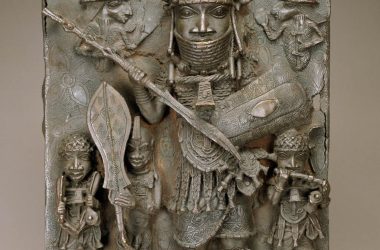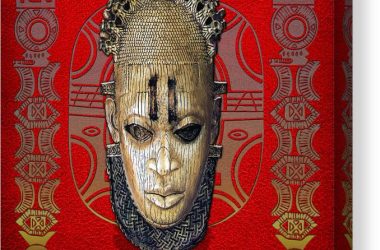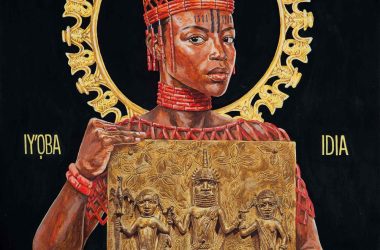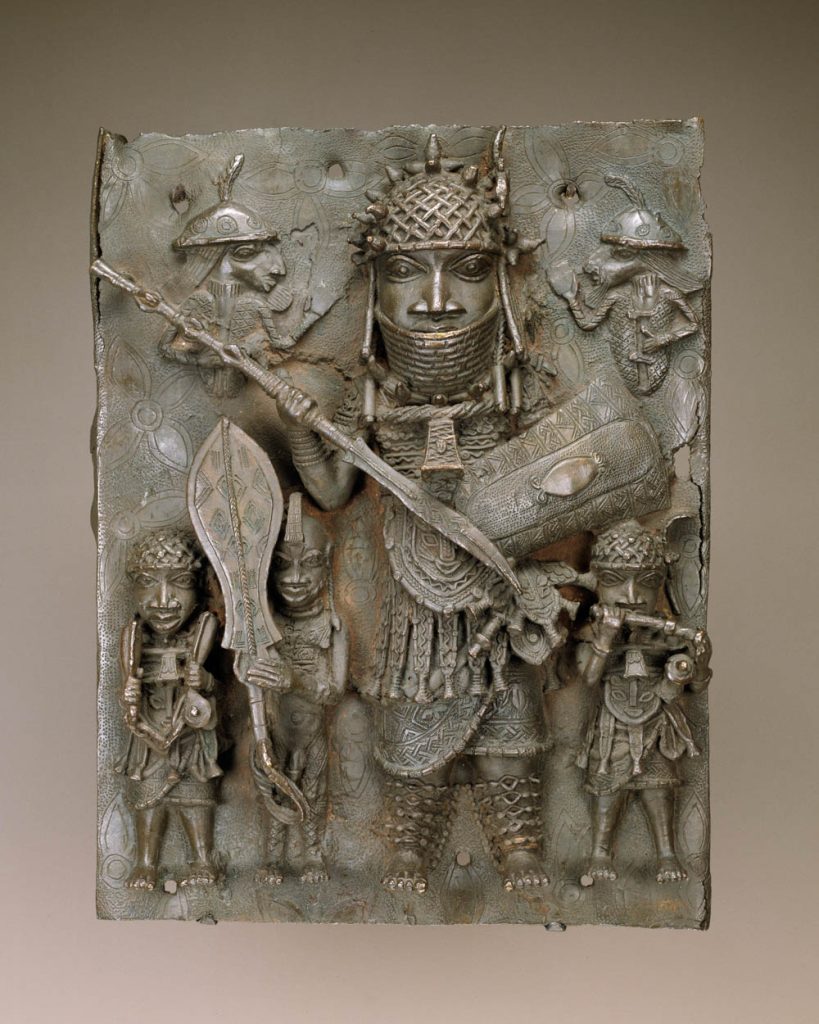The story of the Queen Idia Ivory Mask from the Kingdom of Benin, West Africa, which is now part of Nigeria, is a remarkable tale of power, strategy, and cultural significance. This finely carved mask, though serene in appearance, represents much more than meets the eye..
In the 16th century, the Kingdom of Benin thrived in the coastal region of Edo, with its center in the city of Benin. It was during this time that Oba Esigie, a prominent figure in the Benin Bronzes, ruled. The focus of our story, however, is on the Queen Mother of Benin, Idia.
Idia was not just any woman; she was a tenacious and strategic force who fought relentlessly to secure the future of her son, Esigie. When her husband passed away, leaving two rival sons from different mothers, Idia’s cunning maneuvering ensured that Esigie ascended to the throne. Her ultimate goal was to safeguard the kingdom’s future.
The Queen Mother’s contributions were so significant that a mask was created in her honor. This exquisite ivory mask, over 500 years old, is a testament to her power and influence. Instead of being worn on the face, it was attached to someone’s hip as an adornment. Notably, the mask’s intricately woven hair featured tiny Portuguese merchant figures, symbolizing the strategic alliance between the people of Edo and the Portuguese.
This alliance with the Portuguese allowed for trade, with cloth from Edo exchanged for brass from the Portuguese. This brass played a pivotal role in the development of the Benin bronzes, which showcased the kingdom’s prowess in artistry and craftsmanship. These bronzes depicted their triumphs, rivalries, and the growth of their material culture.
Ivory, used in the creation of the mask, possesses a radiant quality that exudes regality and power. Its exquisite finish, with hints of coral or gold inlays, adds to its grandeur. The mask is a tangible representation of the might and authority of Queen Idia.
However, the history of this mask takes a somber turn in 1897 when the British, driven by their colonial ambitions, invaded Benin City. The brass plaques from the Benin Palace, including this mask, were seized. These plaques held deep cultural significance for the people of Benin.
The mask and other artifacts were dispersed, with a significant portion ending up in the British Museum. During this period, many European museums collected African art as part of the Enlightenment’s need to gather knowledge. Unfortunately, this had a detrimental effect on African cultures, as it often reinforced the notion that Africa was somehow inferior in the hierarchy of humanity.
It wasn’t until the early 20th century that a more liberal generation of Europeans began to reconsider the portrayal of African art in their museums. Influential European artists like Picasso, who had extensive collections of African materials, helped reshape the perception of African art. Picasso’s fascination with African art coincided with his groundbreaking work, “Les Demoiselles d’Avignon,” which played a pivotal role in the development of modern art.
In conclusion, the Queen Idia Ivory Mask is a symbol of power, strategy, and cultural significance. Its journey from the Kingdom of Benin to the British Museum reflects the complex history of colonialism and the evolving perception of African art in the Western world. Today, it stands as a testament to the rich heritage and contributions of African cultures and serves as a reminder of the need to appreciate and preserve such treasures.











